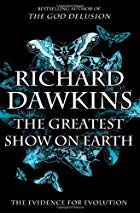 I have just completed Richard Dawkins’ latest book, The Greatest Show on Earth: the Evidence for Evolution. Loved just about all of it, but a few particular themes have left their mark in my mind more than others.
I have just completed Richard Dawkins’ latest book, The Greatest Show on Earth: the Evidence for Evolution. Loved just about all of it, but a few particular themes have left their mark in my mind more than others.
1. The idea of essentialism. We think of dogs and pigs and fish as having an essential character of dogs and pigs and fish. This is, after all, at the very heart of basic concept building from our earliest years that equips us with the tools we need to get by in the world. (Dawkins traces the notion back to Plato — who was of course the arch essentialist with his theory of Ideas (Essences?) — but I see the idea as having a more immediate necessity for our mental makeup.)
But we are like a mayfly trying to make sense of the world in its short 30 minute to 24 hour lifespan. While we can see changes in dog shapes we cannot expand our faculties far enough to see how what appears to be essentially a dog now was a million years earlier something we would not call a dog at all. Yet in the meantime, the chain from that earlier non-dog to our “essential” dog is smooth and we could never find a spot where one animal was a dog and the preceding one wasn’t. Every animal next in line would be classified as a natural offspring of its parent. The differences from one generation to the next would never be so great as to prove otherwise. It is only when we look back through incomprehenible millions of years that we can see that there have been such dramatic changes. Slightest changes (that would never be so great as to enable us to say a parent gave birth to a different species) accumulated over millions of years really can lead to the appearance of something quite different from what was in the family tree at the beginning.
The corollary of this concept is that change does not occur at the outward level of appearance, but at the embryological level. So a lizard like thing 50 million years ago might have two offspring, and each one of those another offspring, and no-one would have been able to see anything about them that made any of them a different species. But one of those final offspring would be the progenitor of what was to become a new species. But for this to occur there would have to be a geographical separation of some of that offspring’s descendants in order to narrow the range of genetic mix — either by being swept on a log to another land mass, or changes from earthquake etc.
But getting around our presumptions that each species has a certain “essential” character to it that sets it within the boundaries of that species is something that one can understand makes the idea of evolution difficult for anyone not familiar with the evidence.
2. Dating the rocks and fossils. I once was led to believe that evolutionists were so dumb that they failed to acknowledge that their methods of dating were circular. Rocks were dated by the fossils in them and fossils were dated by the rocks that housed them. Dawkins trashes this nonsense completely by discussing lucidly the wide range of dating techniques used by archaeologists and paleontologists, and how they are used for cross checking and correcting each other. For God to have somehow changed so many laws of nature after the flood to make the whole gammut of these different clocks all get out of whack to mislead us to thinking that the earth’s age is in billions of years is a bit much to swallow.
-
I had not fully appreciated the UNimportance of the fossil record for establishing the fact of evolution. Not that there isn’t an abundance of fossil evidence, especially for humans. But even if there were no fossils surviving we would be compelled to believe in evolution nonetheless. By comparing the structures of species around the world, and examining their geographical locations, it is clear that the evidence points to common ancestors of species (and a common ancestor of all life) and non-random natural selection. (Fossils are still important, of course, for understanding the pathways of evolution.)
-
One creationist in the film, Voyage that Shook the World (link is to my earlier blogpost), argued that because some finches on Galapagos Islands changed very rapidly, we ought to see them as evidence for a young earth and recent creation. Yet Dawkins cites several examples of rapid evolution alongside more common glacial changes.
